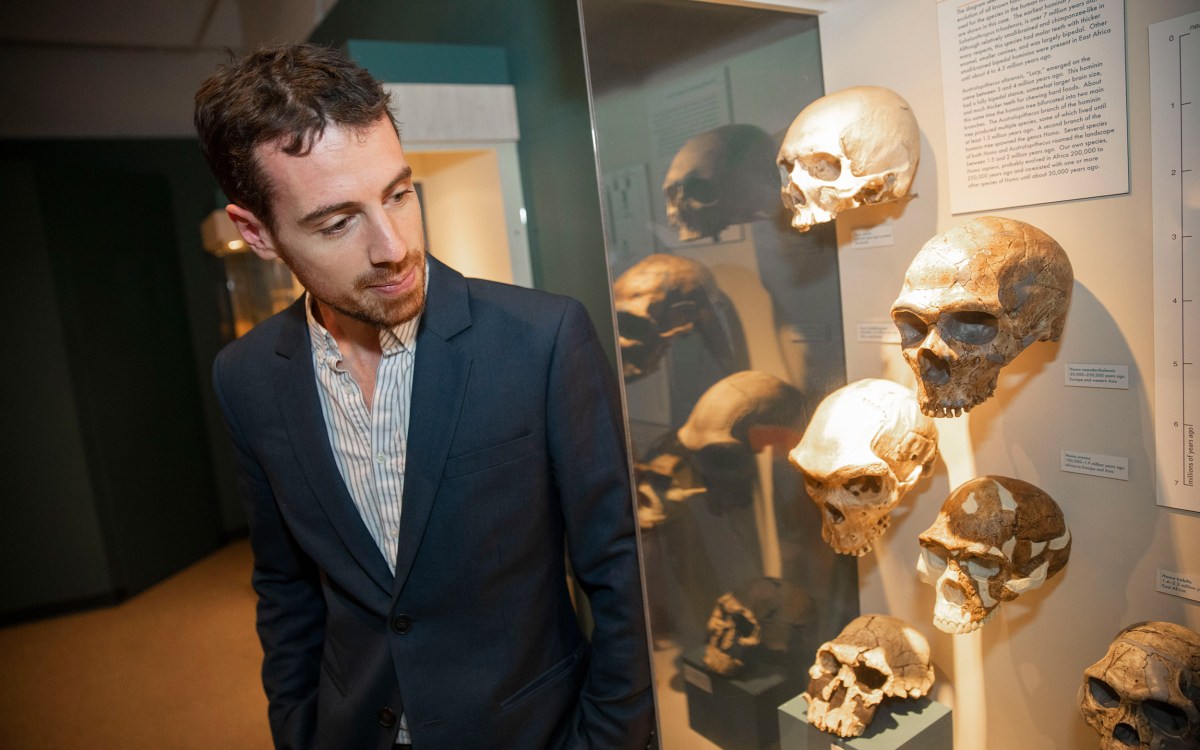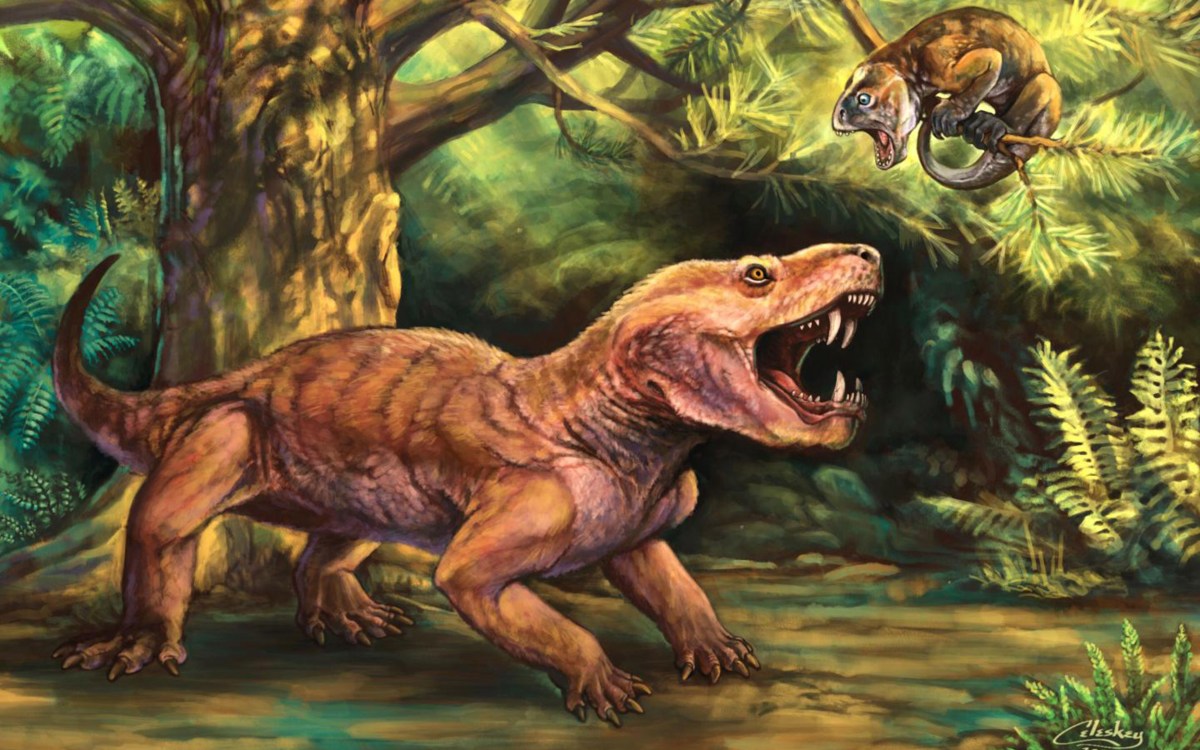Why did some mammals develop tusks?
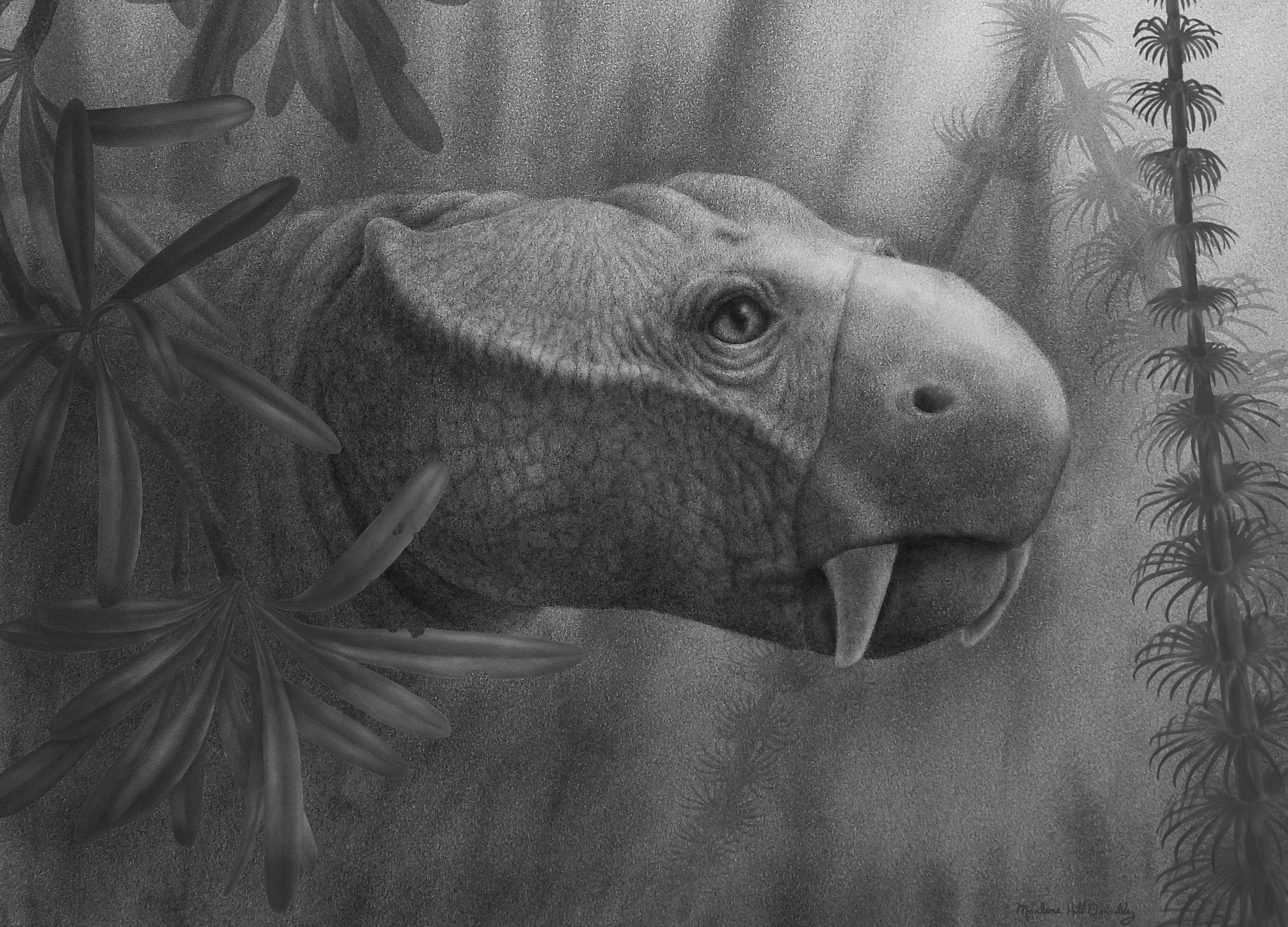
A life reconstruction of the dicynodont Dicynodon. Aside from the tusks in the upper jaw, most dicynodonts possessed a turtle-like beak that they used to chew their food.
Illustration by Marlene Hill Donnelly
Harvard-led study defines and traces their evolution from the first animals to sport them
A wide array of animals have tusks, including elephants, walruses, warthogs, hippos, and even the much smaller hyrax, which look like guinea pigs and are about the size of domestic cats. The other thing they have in common is that all are mammals, which begs the question: Why did some mammals develop tusks?
Published in the Proceedings of the Royal Society B, a new, Harvard-led study traces the origins of tusks to an ancient mammal-like species that lived before the time of the dinosaurs and sheds light on how some mammals would go on to evolve this iconic dental trait. (Minor spoiler: They inherited them.)
Dental exams of fossils more than 200 million years old showed that the first true tusks belonged to later groups of a family of creatures called dicynodonts. These distant relatives of mammals were the most abundant and diverse vertebrates on land before the dinosaurs took over. They lived between 270 and 201 million years ago and included a range of animals from tiny, rat-like dicynodonts to elephant-sized dicynodonts that weighed about 6 tons. Each of them had beaks and a pair of tusk-like teeth protruding from their turtle-shaped heads.
But here’s the kicker: Not all of them were actual tusks.
“Some of them were just big teeth that extended out from the jaw,” said Megan Whitney, a postdoctoral researcher in the FAS Department of Organismic and Evolutionary Biology and lead author of the study.
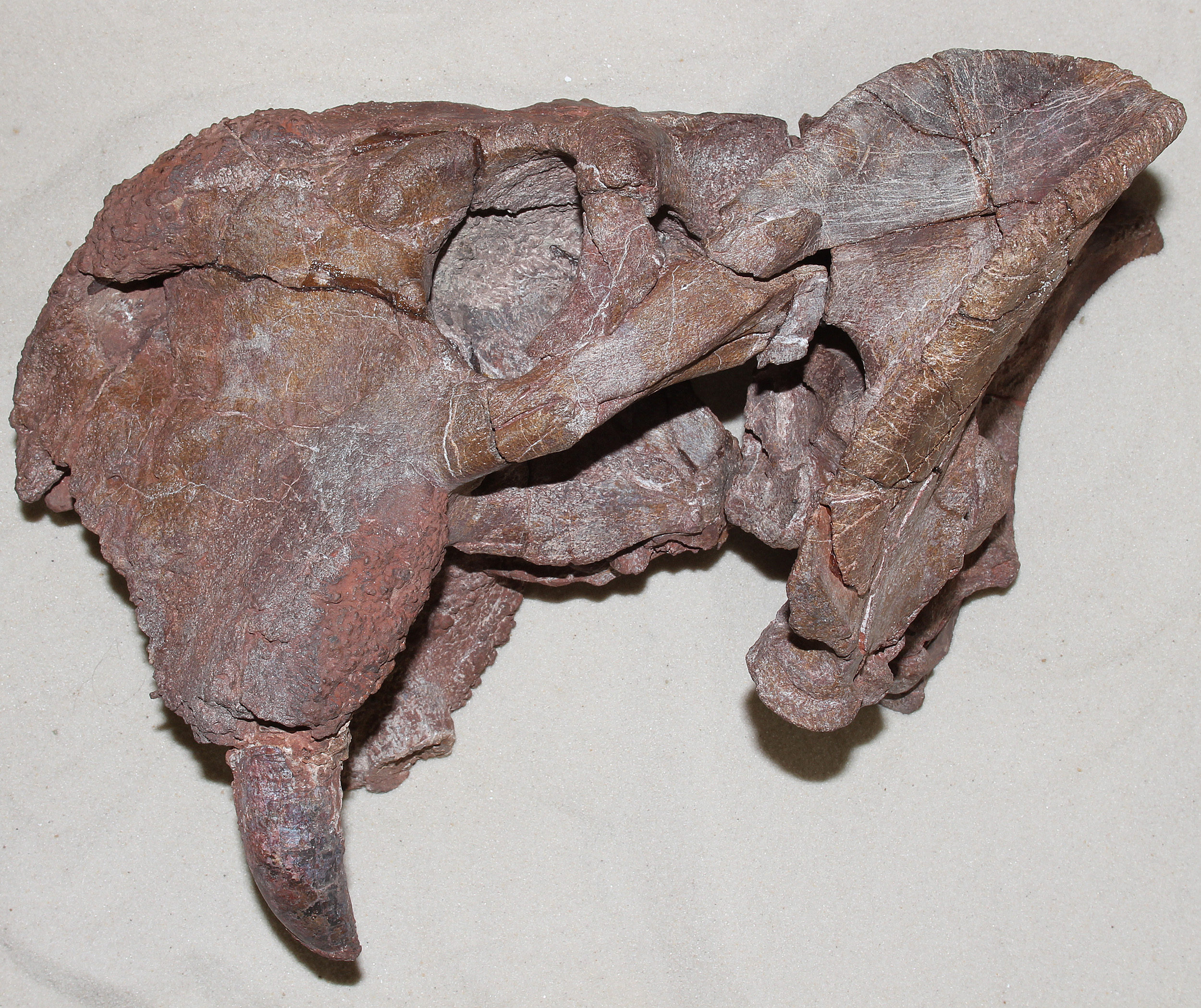
Left side of the skull of the dicynodont Dolichuranus from Tanzania. The large tusk is visible at the lower left of the specimen.
Photo by K. Angielczyk
Whitney can say that with a degree of certainty because one of the first things she and her team of researchers had to do was to define exactly what a tusk is. Previously it had been a somewhat ambiguous term.
They determined that for a tooth to be a tusk it must extend out from the mouth, be made solely of dentine, and grow continuously so it would regenerate if damaged or broken. Regular mammal teeth are also made of dentine but are coated in hard enamel, which would preclude continuous growth.
And therein lies a trade-off and perhaps a clue about the environmental pressures and relative evolutionary advantages for animals with each. Enamel-covered teeth are more durable but irreplaceable; tusk teeth could be used for fighting or digging because if damaged they could repair themselves and keep growing.
Whitney and her colleagues then set out to see how tusks evolved. They analyzed paper-thin slices of fossilized teeth from 19 dicynodont specimens, representing 10 different species, and used micro-CT scans to examine how the tusks attached to the skull to see whether there was any evidence of continuous growth.
They found that some of the dicynodont tusks they examined didn’t make the cut. Many of the early dicynodont tusks were coated in enamel instead of dentine, making those “tusks” just very large teeth.

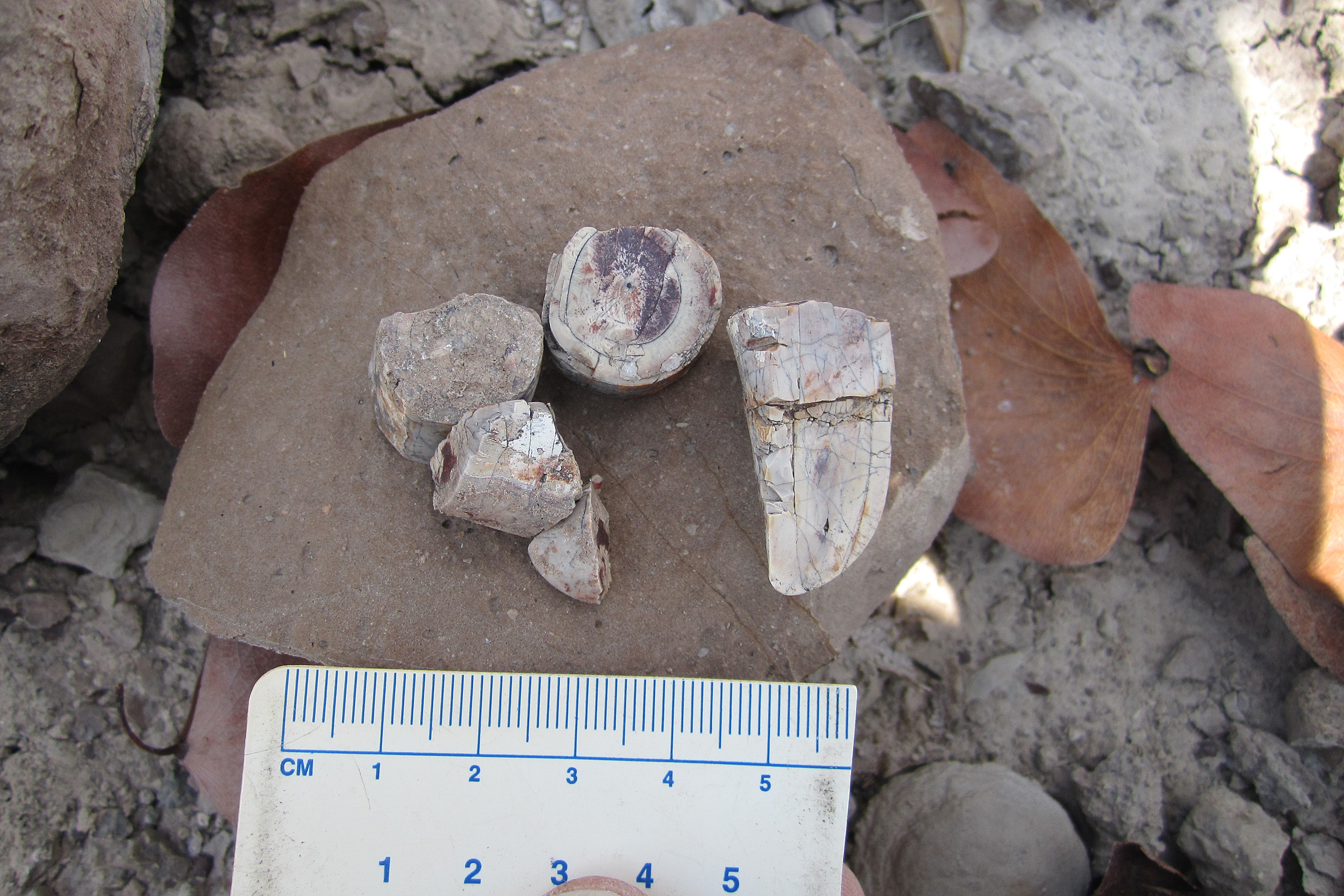
A dicynodont skull still in the ground that is broken to reveal the roots of their tusks/teeth (the white circular structures). Isolated tusk fragments found in Zambia by field teams in 2018.
Photos by K. Angielczyk
The researchers were shocked. “It’s their namesake,” Whitney said. “They were named for these ‘tusks,’ and they’re not they’re not all tusks.”
The groundwork for tusks starts emerging about halfway through the evolution of the group. Some dicynodonts started developing soft tissue ligaments that connected the tooth to the jaw and reduced rates of tooth replacement. Researchers say that those features appear to be necessary for the eventual development of tusks.
They note that the dicynodont lineages that did develop tusks did so independently of one another, as some mammals would do millions of years later.
“I kind of expected there to be one point in the family tree where all the dicynodonts started having tusks, so I thought it was pretty shocking that we actually see tusks evolve convergently,” Whitney said. “This is a similar story to what we see in elephant evolution in that it mirrors a lot of the patterns that have been studied on how elephants got their tusks.”
Taken together, the findings provide a better understanding of the tusks seen in mammals today. It lays out a framework for how animals developed tusks and adds insight into the general evolutionary process.
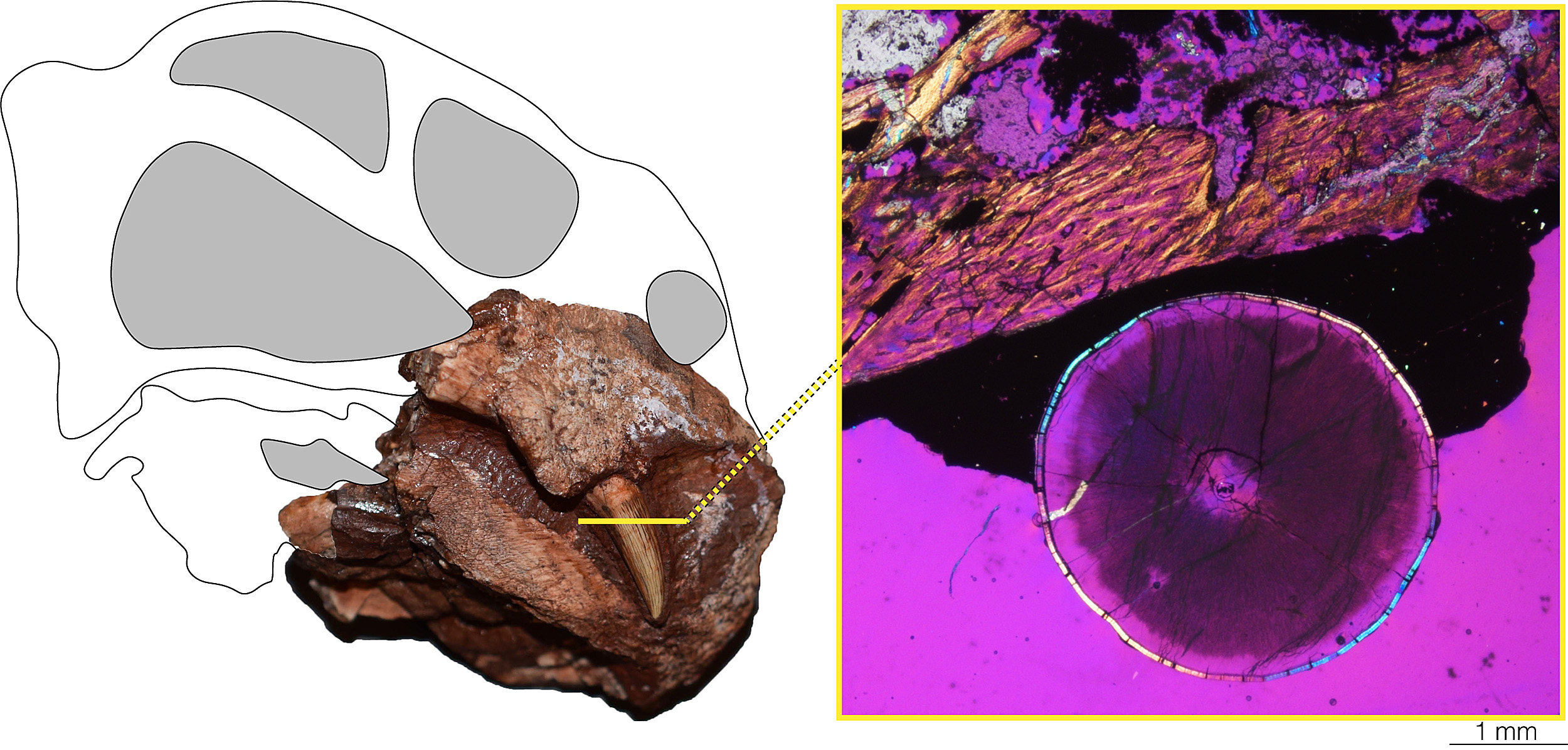
The enlarged caniniforms of Diictodon have enamel making them more like teeth than tusks. The cross section reveals a ring of enamel around the outside of the tusk that is illuminated under polarized light.
Image by Megan Whitney
“We can see how to build a tusk,” said co-author Brandon Peecook, a curator at the Idaho Museum of Natural History.
The anatomical changes necessary to build tusks are exclusive to modern mammals because they were inherited from synapsids, like dicynodont.
With all this, the real question for tusk lovers then becomes: Does this mean humans can one day evolve to have them? The answer is it’s possible, but don’t get your hopes up.
“That could be a brave new world,” Whitney said.
This research was supported with funding from the National Science Foundation and National Geographic.



